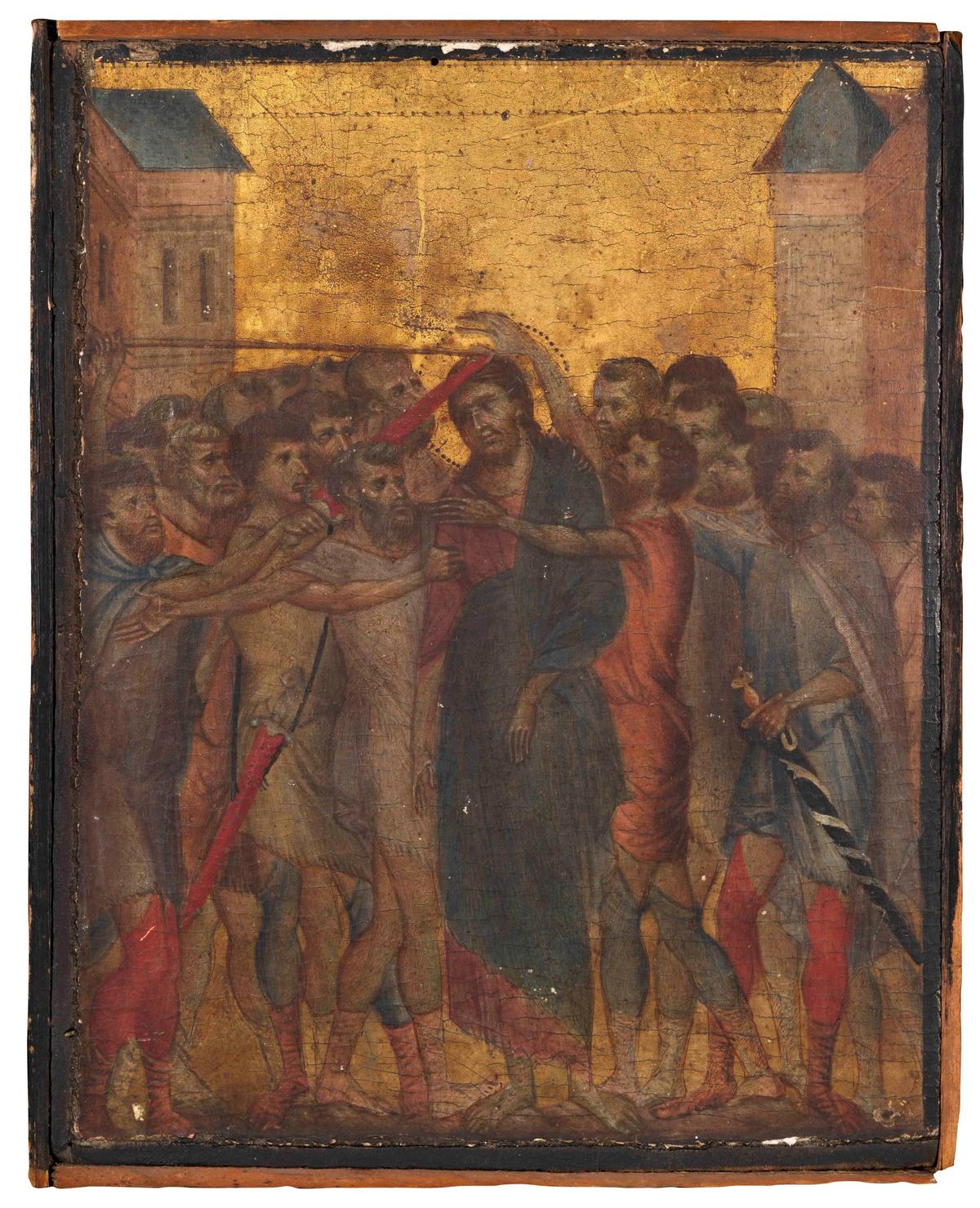The Musée du Louvre in Paris has acquired a prestigious medieval painting by the Florentine artist Cimabue— La Dérision du Christ (The Mocking of Christ, around 1280)—that was found in a kitchen in Compiègne, north of Paris, in 2019. The work, which hung above the hotplate in the 1960s house, was auctioned for €24.1m (with fees) in Senlis, northern France, in October the same year.
The Louvre made the Cimabue announcement 3 November, while revealing the acquisition of another “national treasure”, a drawing by Victor Hugo entitled Marine Terrace (1855). “Cimabue's La Dérision du Christ constitutes a crucial milestone in the history of art, marking the fascinating transition from icon to painting,” says Laurence des Cars, Louvre director, in a statement.
She adds: “It will soon be presented alongside the Maestà [around 1275-1300], another masterpiece by Cimabue belonging to the Louvre and whose restoration is currently continuing. Brought together, the two paintings will be the subject of an exhibition in spring 2025. As for the sumptuous drawing Marine Terrace, in addition to its rare format, it is one of the most beautiful illustrations by Hugo the artist.”
Des Cars said that the two acquisitions were possible thanks to “the support and loyalty of [the museum’s] patrons, particularly [US property developer] Harry and Linda Fath as well as the Société des Amis du Louvre [a patrons group]”. The Art Newspaper understands that the Louvre matched the €24.1m sale price for the Cimabue work.
"The Louvre has used part of the income from the brand licence for the Louvre Abu Dhabi; the Société des Amis du Louvre contributed the final million euros that made this acquisition possible. A couple, members of the American Friends of the Louvre [the Faths], also made a contribution to support this acquisition," says a press statement.
The French government blocked the export of the Cimabue painting following the auction in October 2019. Deeming it to be a “national treasure”, the culture ministry had 30 months to raise the funds to acquire the rare, small-scale, wood panel painting.
The decision was disappointing news for the likely buyer, the Alana Collection of Italian Renaissance paintings—formed by the US-based collectors Àlvaro Saieh and Ana Guzmán—and for the family of the seller. The elderly woman who owned the Cimabue died two days after the sale, bequeathing it to three heirs.
The French Culture Ministry said in a statement: “These are two exceptional works, formerly in private collections, both classified as ‘national treasures’. These acquisitions are the result of an exceptional mobilisation of the Louvre Museum which allows to keep works in France coveted by the greatest museums of the world, and to make them accessible to all.”


